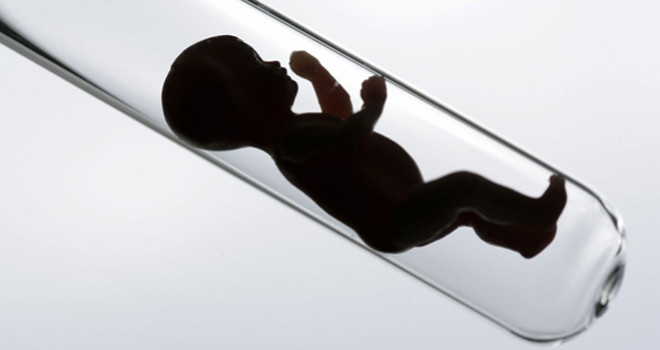Reproductive Medicine IVF
For couples struggling with infertility, IVF, or in vitro fertilization brings back their hope.
In vitro fertilization (IVF)
In vitro fertilization (IVF) is a method of assisted reproduction that involves combining an egg with sperm in a laboratory dish. If the egg fertilizes and begins cell division, the resulting embryo is transferred into the woman’s uterus where it will hopefully implant in the uterine lining and further develop.
Description
Normally, an egg and sperm are fertilized inside a woman's body. If the fertilized egg attaches to the lining of the womb and continues to grow, a baby is born about 9 months later. This process is called natural or unassisted conception.
IVF is a form of assisted reproductive technology (ART). This means special medical techniques are used to help a woman become pregnant. It is most often tried when other, less expensive fertility techniques have failed.
There are five basic steps to IVF:
Step 1: Stimulation, also called super ovulation
Step 2: Egg retrieval
Step 3: Insemination and Fertilization
Step 4: Embryo culture
Step 5: Embryo transfer

Why the Procedure Is Performed
IVF is done to help a woman become pregnant. It is used to treat many causes of infertility, including:
- Advanced age of the woman (advanced maternal age)
- Damaged or blocked Fallopian tubes (can be caused by pelvic inflammatory disease or prior reproductive surgery)
- Endometriosis
- Male factor infertility, including decreased sperm count and blockage
Unexplained infertility
Risks
IVF involves large amounts of physical and emotional energy, time, and money. Many couples dealing with infertility suffer stress and depression.
A woman taking fertility medicines may have bloating, abdominal pain, mood swings, headaches, and other side effects. Many IVF medicines must be given by injection, often several times a day. Repeated injections can cause bruising.
In rare cases, fertility drugs may cause ovarian hyper stimulation syndrome (OHSS). This condition causes a buildup of fluid in the abdomen and chest. Symptoms include abdominal pain, bloating, rapid weight gain (10 pounds or 4.5 kilograms within 3 to 5 days), decreased urination despite drinking plenty of fluids, nausea, vomiting, and shortness of breath. Mild cases can be treated with bed rest. More severe cases require draining of the fluid with a needle.
Medical studies have shown so far that fertility drugs are not linked to ovarian cancer.
Risks of egg retrieval include reactions to anesthesia, bleeding, infection, and damage to structures surrounding the ovaries, including the bowel and bladder.
There is a risk of multiple pregnancies when more than one embryo is placed into the womb. Carrying more than one baby at a time increases the risk of premature birth and low birth weight. (However, even a single baby born after IVF is at higher risk for prematurity and low birth weight.)
It is unclear whether IVF increases the risk of birth defects.
After the Procedure
After embryo transfer, the woman may be told to rest for the remainder of the day. Complete bed rest is not necessary, unless there is an increased risk of OHSS. Most women return to normal activities the next day.
Women who undergo IVF must take daily shots or pills of the hormone progesterone for 8 to 10 weeks after the embryo transfer. Progesterone is a hormone produced naturally by the ovaries that helps thicken the lining of the womb (uterus). This makes it easier for the embryo to implant. Too little progesterone during the early weeks of pregnancy may lead to miscarriage.
About 12 to 14 days after the embryo transfer, the woman will return to the clinic so that a pregnancy test can be done.
References
Ginsburg ES, Racowsky C. Assisted reproduction. In: Strauss JF, Barbieri RL, eds. Yen & Jaffe's Reproductive Endocrinology. 7th ed. Elsevier Saunders; 2014:chap 31.
Lobo RA. Infertility: etiology, diagnostic evaluation, management, prognosis. In: Lentz GM, Lobo RA, Gershenson DM, Katz VL, eds. Comprehensive Gynecology. 6th ed. Philadelphia, PA: Elsevier Mosby; 2012: chap 41.
Rebar RW, Catherino WH. Reproductive endocrinology and infertility. In: Goldman L, Schafer AI, eds. Goldman's Cecil Medicine. 25th ed. Philadelphia, PA: Elsevier Saunders; 2016:chap 236.
The Practice Committee of the Society for Assisted Reproductive Technology and the Practice Committee of the American Society for Reproductive Medicine. Criteria for number of embryos to transfer: a committee opinion. Fertil Steril. 2013;99(1):44-46.
https://www.asrm.org/topics/detail.aspx?id=1278
Are you interested in Reproductive Medicine IVF abroad?
Our Team will take care in organizing your medical travel.
Need Help? Call Now +33.686.77.51.31 (France)
send inquiry
Watch video about Treatment Abroad About Us
Tags: treatment, healthcare abroad,
Category: Specialties
(Find more articles 6)
❖ Dental Emergency
❖ Prostate cancer treatment in Europe
❖ Orthopedic surgery abroad
❖ Plastic surgery Abroad
❖ About Cardiology Consultation Abroad
-

Call and explain your case in confidence. -

Then we match your case to the best medical expert. -

The expert reviews and issues a report with diagnostic and treatement recommendations.
- Could Computer-Brain interface transform the world?
In March, Elon Musk announced via twitter that he is about to merge human and machine with a Brain Computer Interface (BCI). Hypothetically, this technology creates an upgradable, updatable interface that could be used in countless ways.
• 2 comments • 1206 reads - What is gastric bypass surgery?
Gastric bypass surgery, a type of bariatric surgery (weight loss surgery), is a medical procedure that divides the stomach into two parts (a smaller upper pouch and a larger lower pouch) and reroutes the small intestine so that it is connected to both pouches.
• 0 comments • 1262 reads

